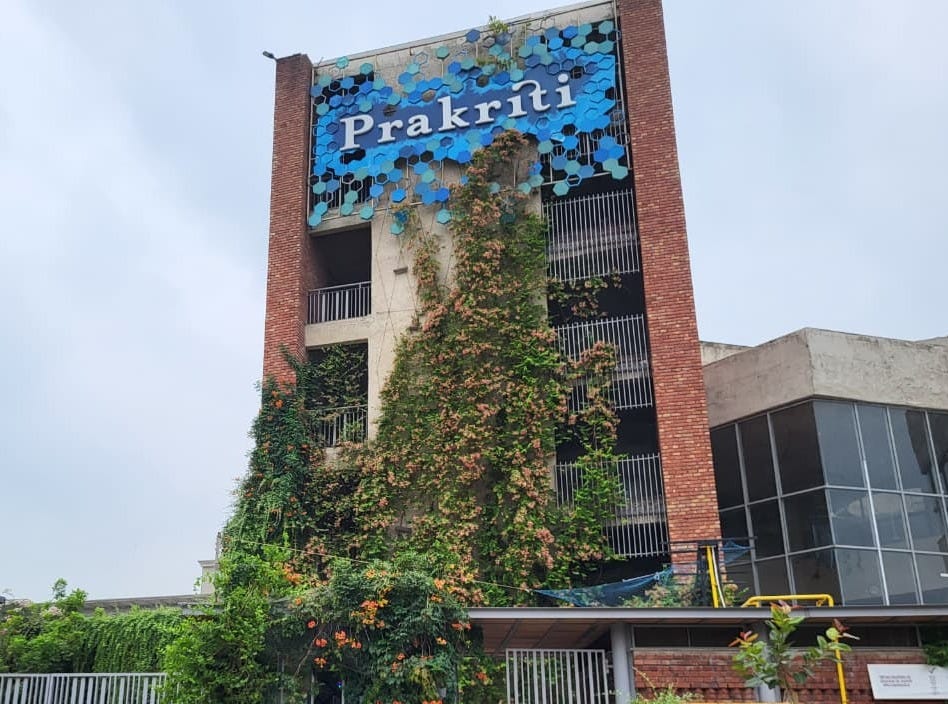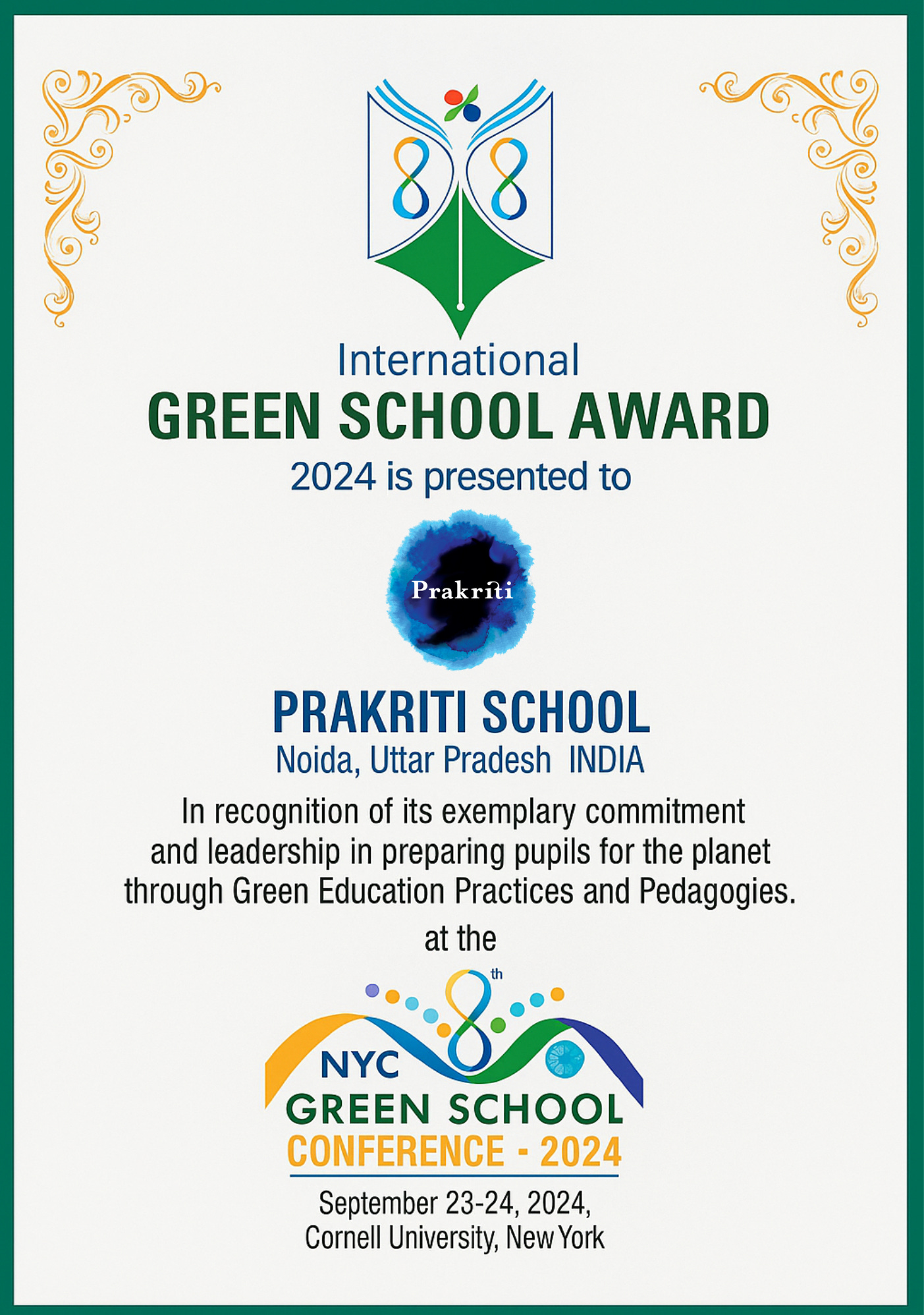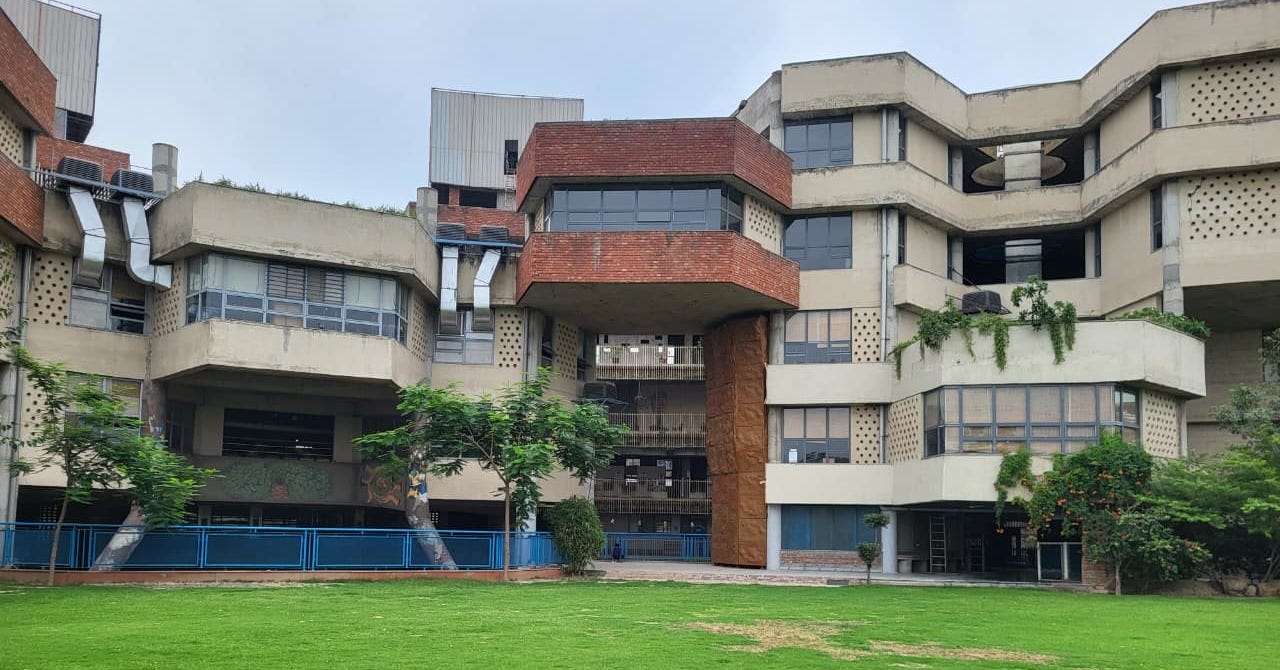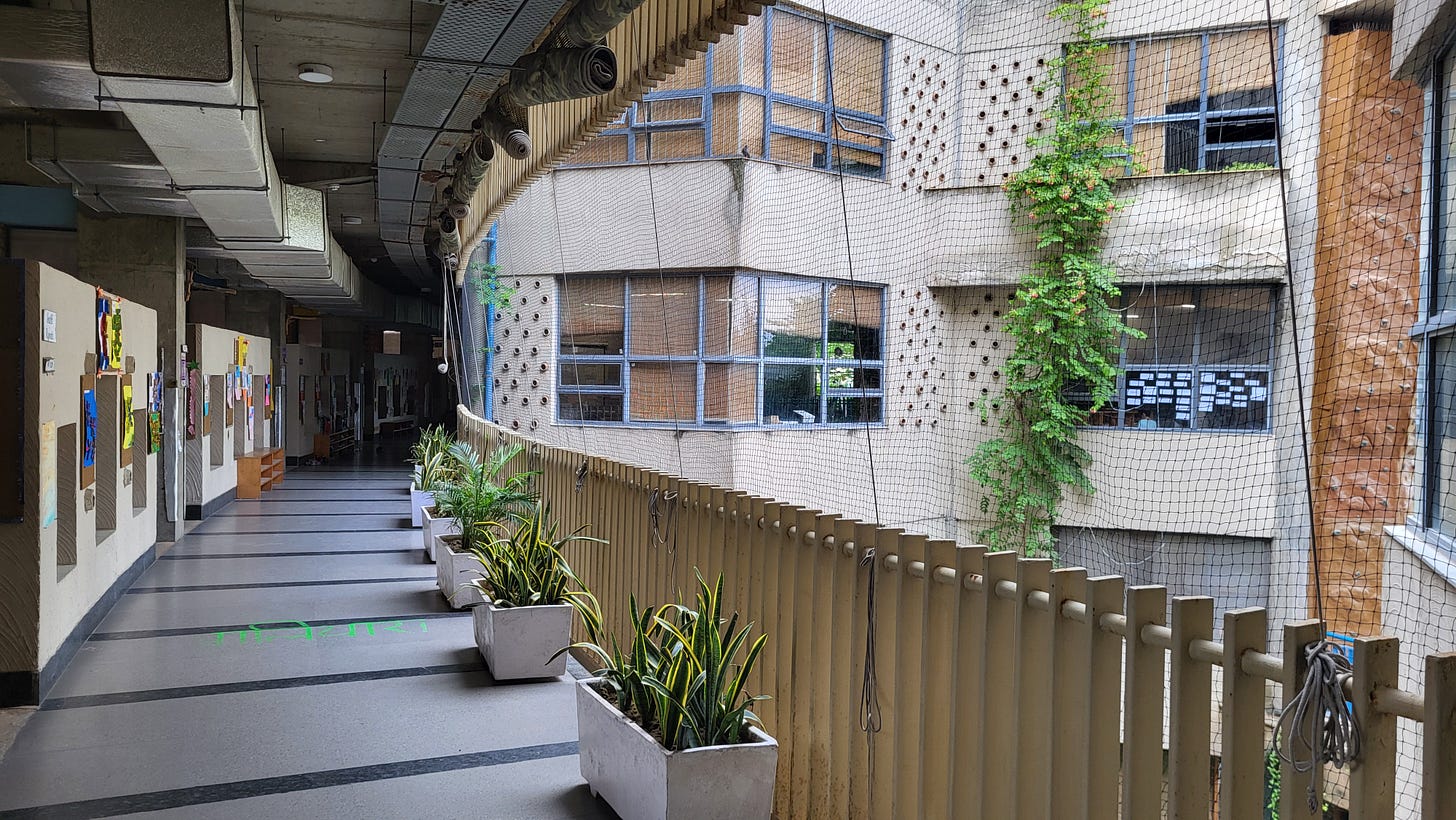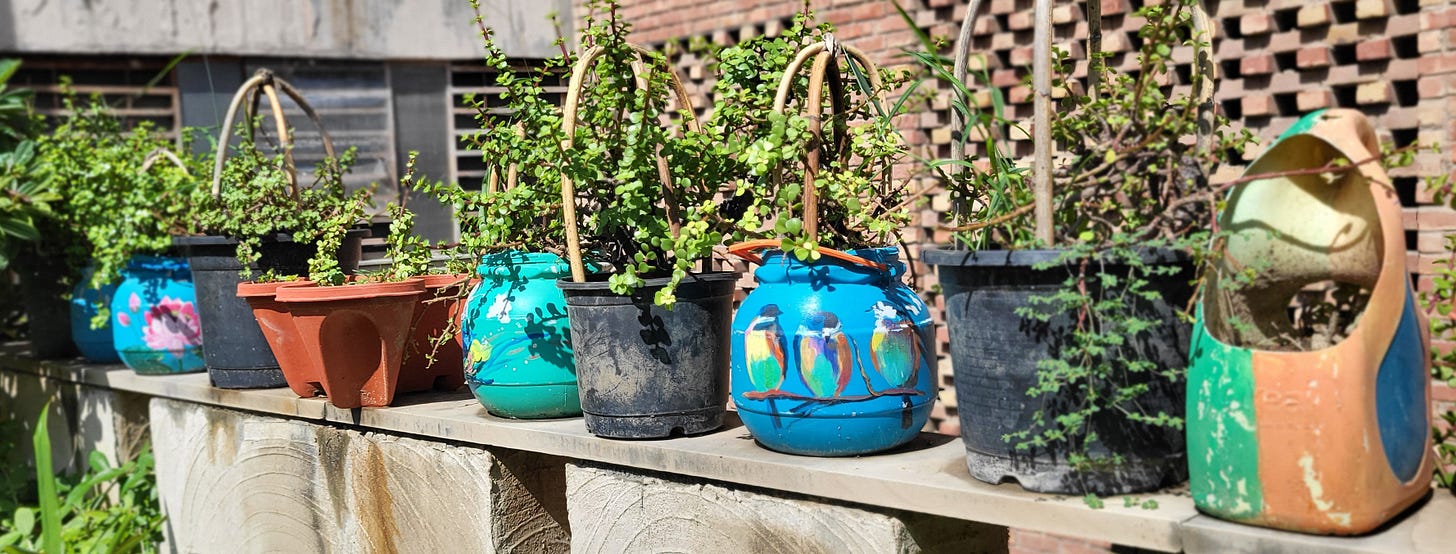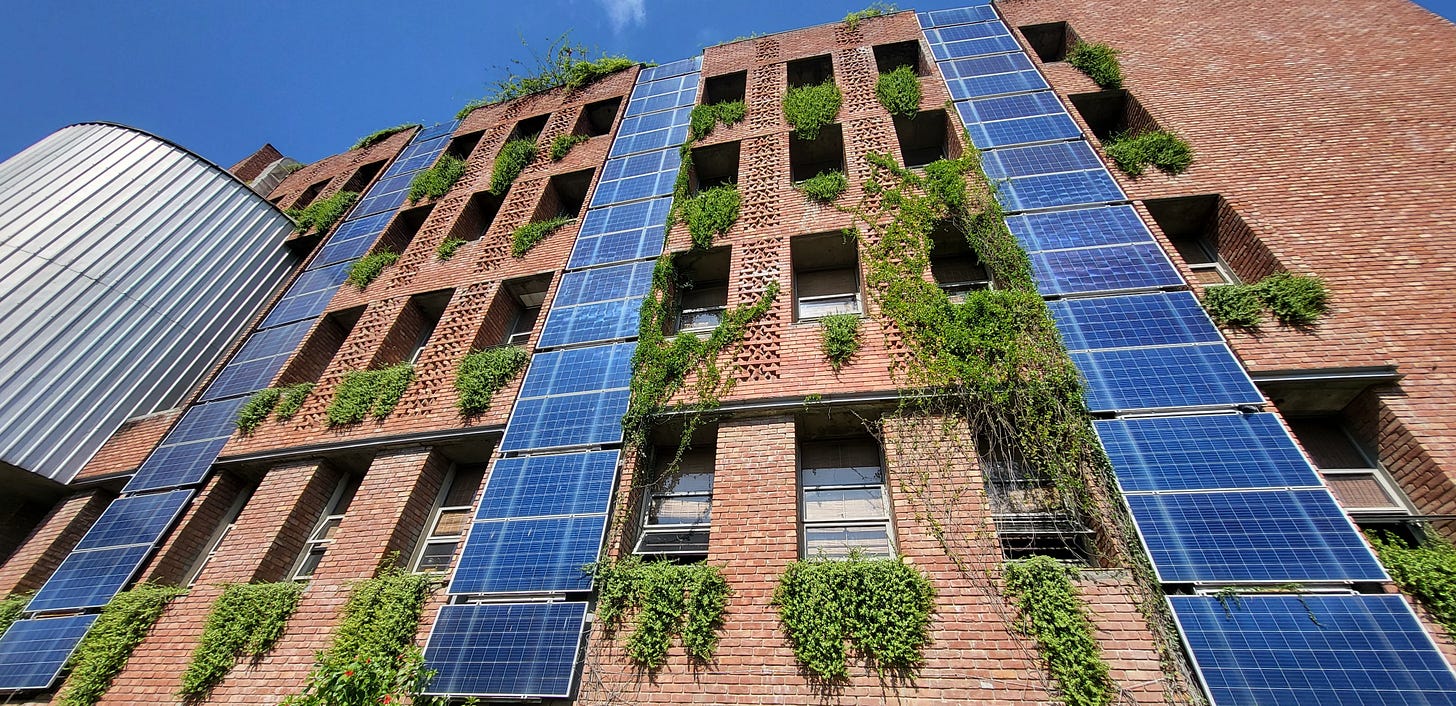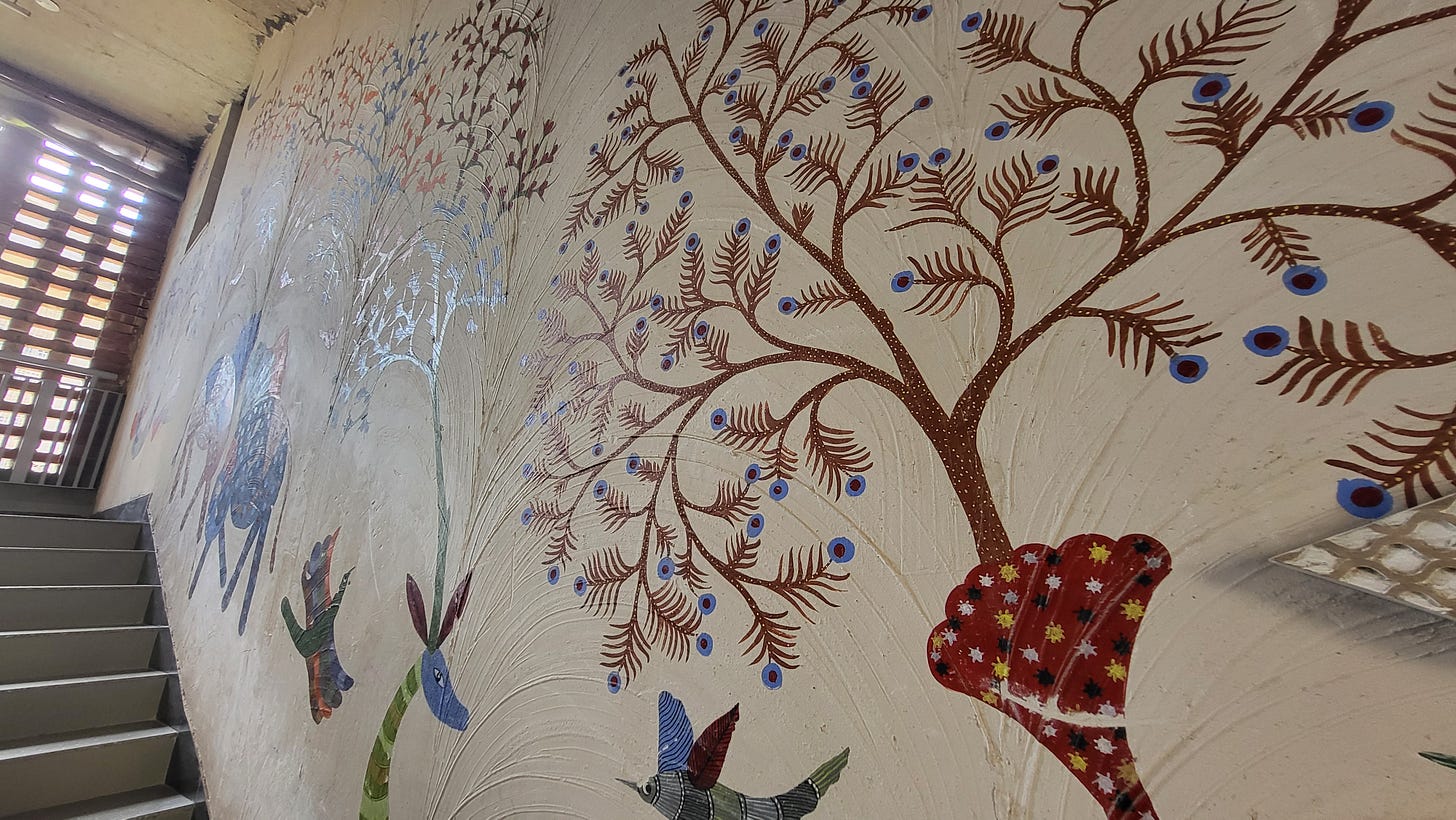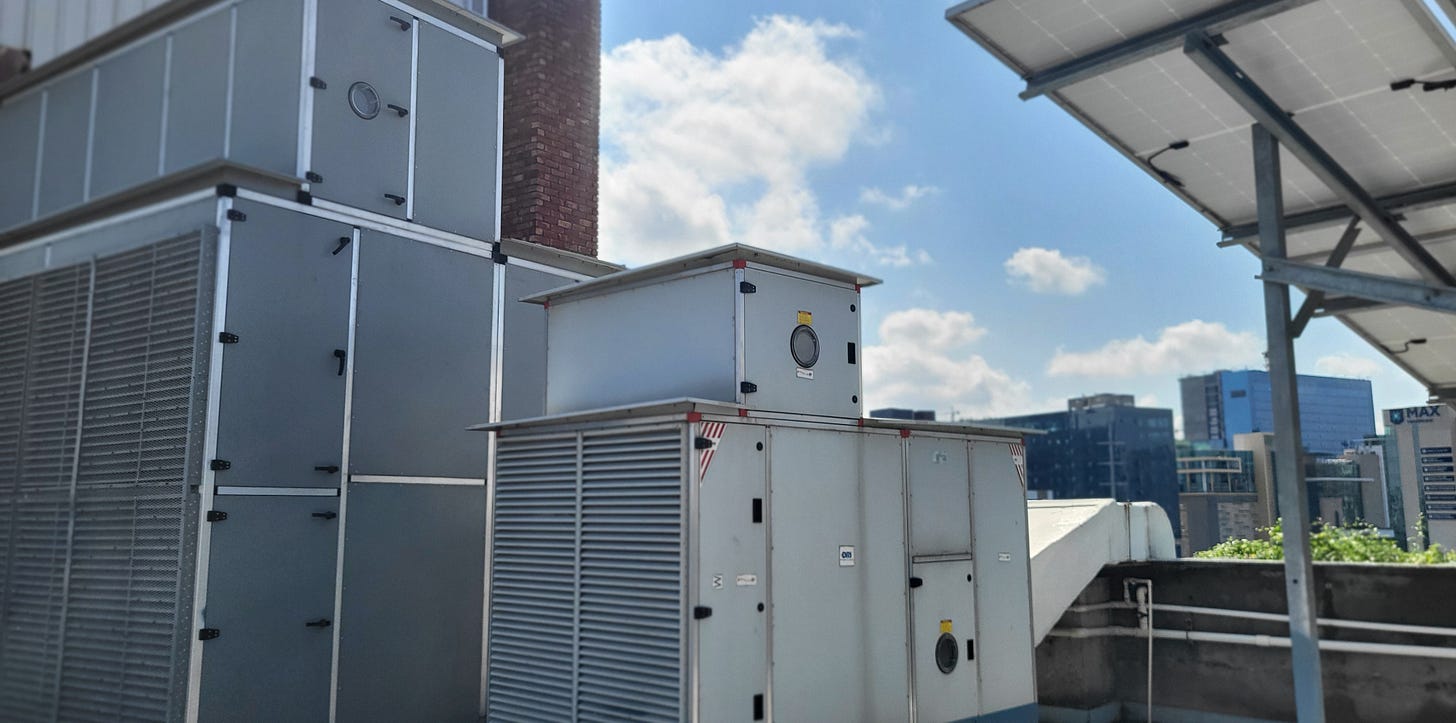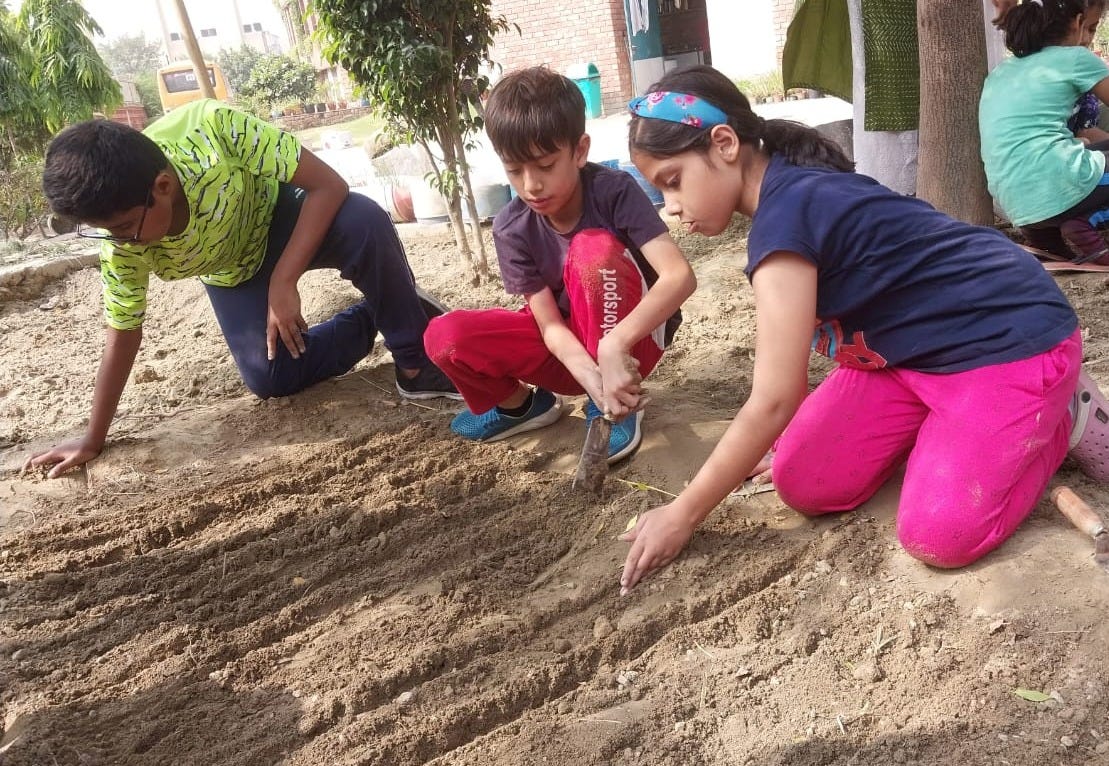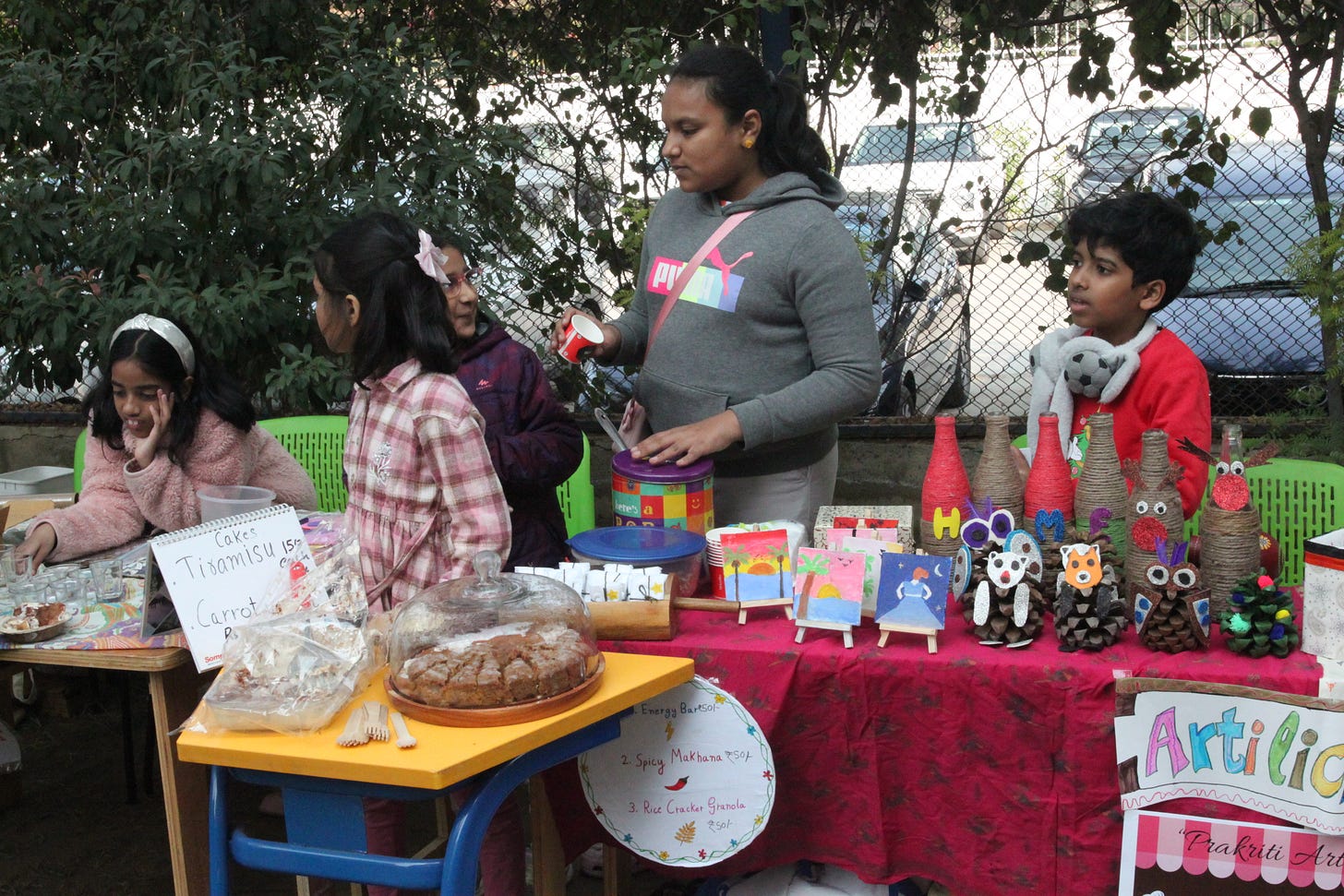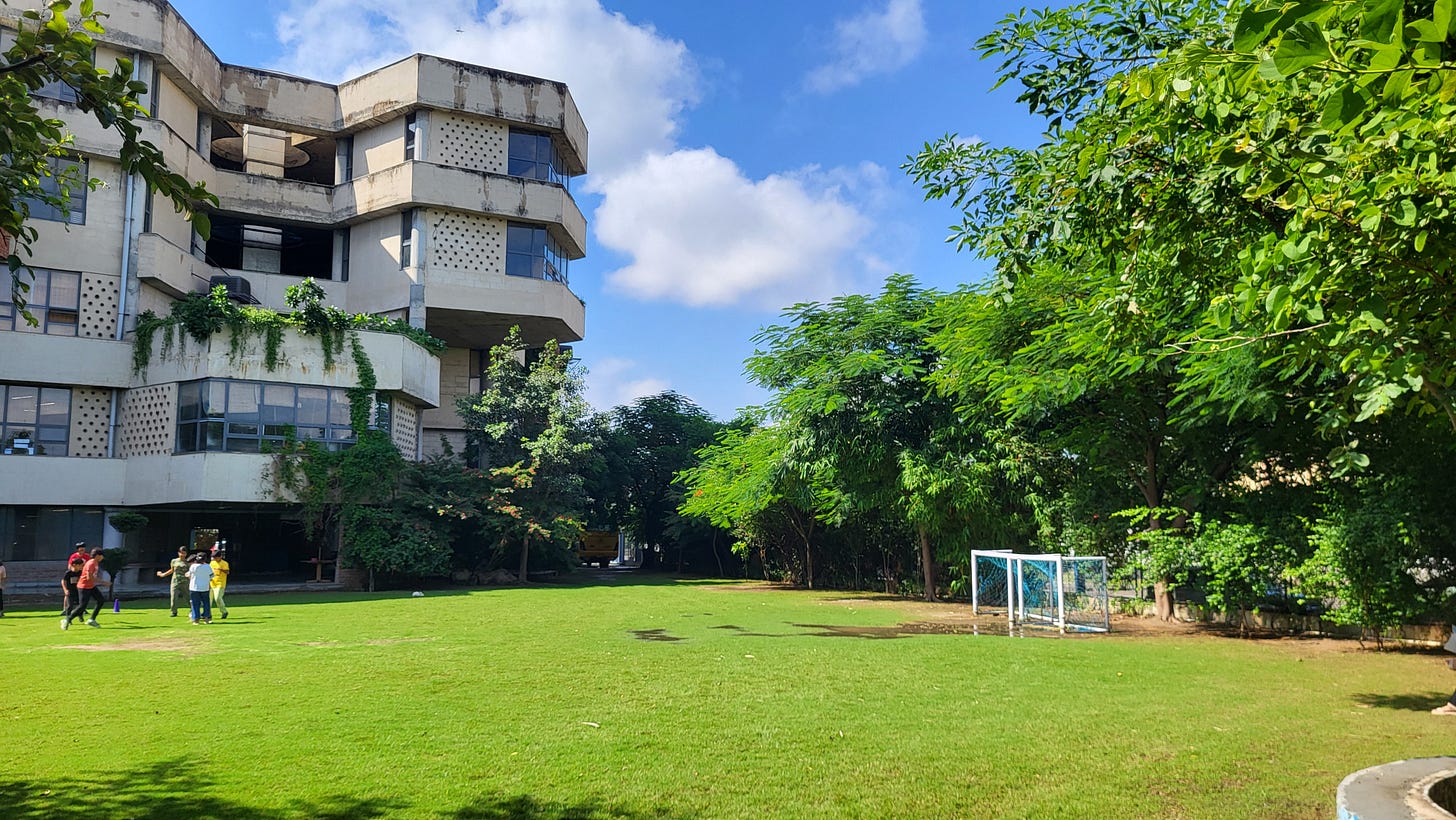Can We Save the Planet or Should We Save Ourselves?
Celebrating the anniversary of our Green School prize at NYC’2024
Saving the planet is a tall order and is a rather egoistic claim. Human activity has breached most ecological boundaries that once ensured the stability of our planet. We can at best save ourselves from natural disasters by taking critical measures.
Unchecked industrial expansion, deforestation, carbon emissions, and the overexploitation of natural resources have destabilized ecosystems and accelerated the global climate crisis. The consequences—rising temperatures, extreme weather events, and the degradation of air, water, and soil—make clear that humanity can no longer afford to design its built environments in disregard of nature. Educational institutions, in particular, carry a responsibility to embody sustainability in both form and function.
School buildings must therefore be conceived as models of environmental harmony: incorporating natural light and ventilation, conserving energy and water, and reducing their ecological footprint. Such architecture does not merely mitigate environmental damage; it also imparts to learners a vital lesson—that human progress is sustainable only when it is aligned with the principles and limits of the natural world.
Our campus exemplifies this vision, and the “Green School Award” served as a welcome recognition of our commitment to using thoughtful design and innovative practices for the benefit of both learners and the planet.
Click here to read about it
We designed our school to be a living classroom, where every feature, from its natural ventilation to its water recycling systems, teaches a tangible lesson in environmental stewardship. It's a place where students don't just learn about sustainability – they experience it daily.
Here's an inside look at what makes our green school a unique and impactful space:
Designed for Natural Harmony
Our building's architecture is deeply rooted in principles that connect us with nature and reduce our environmental footprint:
Spaces Bathed in Natural Light: Strategically placed windows and skylights fill every learning area with daylight, significantly cutting down on artificial lighting and energy use. This also creates a healthier, more uplifting space for student well-being and focus.
Creatively Repurposing Resources: We actively transform discarded materials like plastic and tin cans into functional and decorative items across campus. This practice not only minimizes waste but also cultivates resourcefulness and creativity in our community.
Harnessing Solar Power: A significant portion of our energy comes directly from the sun. Our campus is equipped with 50KW capacity of solar panels, a substantial contribution towards our total 90KW energy requirement. This investment in renewable energy drastically reduces our carbon footprint and serves as a powerful, visible example of clean energy in action for our entire community.
Green Corridors & Breathing Walls (Ancient Wisdom): Our green corridors act as wind tunnels, enhancing natural ventilation and airflow throughout the school. Classrooms feature green balconies, tended by students, connecting them to living systems. The building itself "breathes" using Vedic plaster (lime and cow-dung) and embedded clay pots for natural ventilation. This ancient wisdom helps regulate indoor temperatures, boosting cooling, reducing mechanical system reliance, and promoting a healthier, thermally stable environment.
Innovative Cooling for Comfort and Efficiency
Opting for an intelligent, sustainable cooling solution over energy-intensive air conditioning, our school uses an extensive 180,000 CFM evaporative cooling system. This choice provided significant benefits, saving 50% in Capital Expenditure (Capex) during construction and an impressive 90% in Operational Expenditure (Opex) year over year, compared to the 600 tones of conventional AC a building of our size would typically require.
Even with our 1.80 lakh sq ft covered area, we consciously utilize only about 60%, leaving Levels 3 and 4 unused to optimize energy. Our system ensures 20 fresh air exchanges per hour, maintaining a comfortable indoor thermal zone of 24.7-33 degrees Celsius in Delhi's climate. While there might be noticeable warmth during 5-7 days of peak humidity in July, this minor trade-off provides six months of consistent fresh air, highlighting our body's natural adaptability.
Advanced Air Quality and Energy Management
Beyond natural ventilation, we ensure optimal air quality and efficiency through advanced systems, notably direct-contact air washers. These units offer exceptional benefits compared to traditional cooling coils.
Unlike traditional systems, Air washers achieve remarkable energy savings through efficient heat and moisture exchange. A typical 20,000 CFM air washer unit requires only 1.43 hp (1.07 kW), a stark contrast to the 8.22 hp (6.13 kW) of a comparable conventional system. This efficiency stems partly from their lower air-side pressure drop (0.82 in.H2O vs. 2.26 in.H2O).
Crucially for a school environment, air washers also serve as powerful air purifiers. They are effective at filtering 95% of particles larger than 5 microns, including dust, pollen, and even agglomerated microorganisms, ensuring that the air our students breathe is remarkably clean. Furthermore, our air washer system’s water treatment utilizes dissolved ozone, a powerful biocide that purifies the water without the need for traditional chemical additives like chlorine, aligning perfectly with our goal of a chemical-free learning space.
These units are also remarkably space and cost-efficient. A typical air washer unit has a capital cost of around $4,000 (approximately INR 3,34,000 in today’s terms, based on data from 2003), significantly less than the $25,000 (approximately INR 20,87,500 in today’s terms) for a traditional coil, and its compact size and lighter installed weight (524 kg vs. 2414 kg for coils) contribute to overall building efficiency.
Sustainable Materials and Water Management
Crucial decisions made during the construction phase laid the groundwork for our sustainable operations:
AAC (Autoclaved Aerated Concrete) Construction: We chose AAC blocks for their superior environmental benefits. Made from recycled fly ash with low water consumption, their lightweight nature minimizes waste and transport emissions. AAC’s excellent thermal insulation significantly reduces heating and cooling energy needs, also enabling faster, non-toxic construction and improving indoor air quality.
Water Recycling with STP: Our integrated Sewage Treatment Plant (STP) recycles all wastewater for use in washing bays and for flushing toilets, including waterless urinals. Separate domestic and STP water lines ensure hygiene while maximizing reuse.
Extensive Rainwater Harvesting: Our campus captures and replenishes rainwater with large tanks preventing flooding during heavy downpours. Four recharge wells (two each of 4.5m and 6m diameter) are designed to handle Delhi/NCR’s wettest July rainfall (237mm), effectively protecting and replenishing the aquifer.
Learning Beyond the Classroom Walls
Farming as a part of Curriculum: Students in Grades 2-5 engage in year-round farming, directly connecting their environment curriculum with practical lessons in soil preservation and resource consciousness. They don't just read about agriculture; they experience the food cycle firsthand, from planting seeds to harvesting produce.
Click here to read more about farming curriculum here
Measuring Food Waste and Composting: We actively teach responsible consumption and the value of resources. Students diligently measure their food waste, which is then collected and sent for vermicomposting. This process transforms organic waste into nutrient-rich soil, completing the cycle and educating students about waste reduction and the benefits of composting.
Purpose Projects: Our middle school learners are being encouraged to observe, question, and find innovate solutions to problems emanating from lifestyle choices in the Purpose Projects that commence this year.
Mannan: Our commitment to a sustainable future culminates annually in Mannan/मनन, our vibrant festival celebrating sustainability, enterprise, and community. This event is a dynamic platform where learners, parents, and local partners showcase innovative, eco-friendly ventures, such as home-made chemical-free soaps and upcycled crafts.
Click here to read more about Mannan
A Campus Enriched by Nature's Bounty
Our landscape is a vibrant testament to our commitment to biodiversity and natural beauty. Our campus is home to a rich variety of native trees, including Amaltas, Jamun, Aam, Shehtoot, Ber and Neem. This natural tree cover provides essential shade, contributes to passive cooling, supports local ecosystems, and will eventually offer edible fruits, further integrating our environment into daily life.
A Living Legacy for a Greener Tomorrow
Our campus is a living lesson in sustainability. The green building—from its eco-conscious design and innovative cooling systems to the learning spaces—is central to our educational philosophy. This commitment extends beyond our walls, with events like Mannan fostering a community focused on mindful living and entrepreneurial environmental solutions.
We are not just educating students; we are empowering them as conscious global citizens with the knowledge and values to build a healthier, more sustainable future.
A school building should be more than just walls and classrooms. It should be an integral part of the learning experience, a testament to our values, and a model for sustainable living.
This monsoon, we had the distinct privilege of spending a day with visionary educator Mr. Sonam Wangchuk and Ms. Geetanjali Angmo. In thoughtful conversations with our leaders, they generously shared ideas around sustainable living, eco-friendly practices, and the importance of building with nature rather than against it. From reducing our reliance on air conditioning to using design elements like wind channels and greenery for natural cooling, their dialogue was insightful and deeply relevant to our mission.


